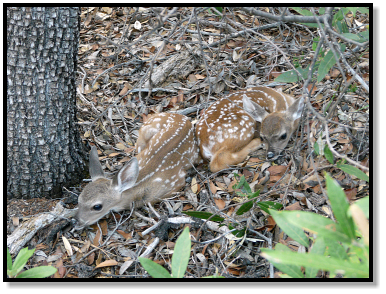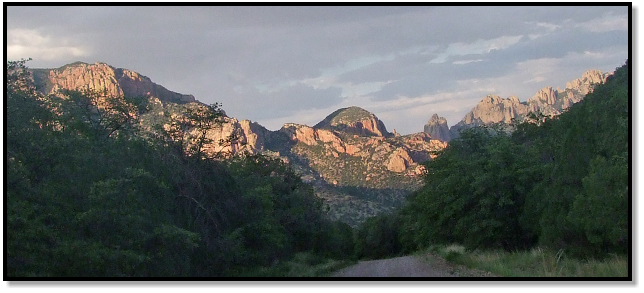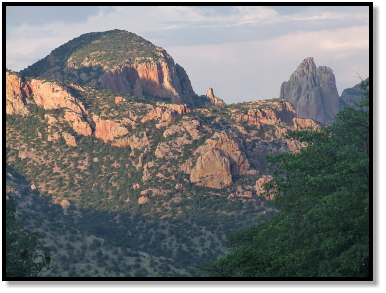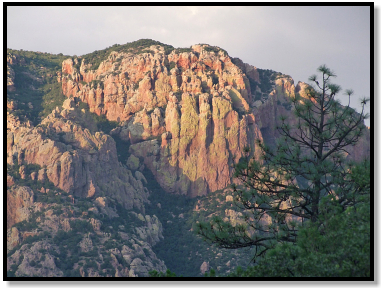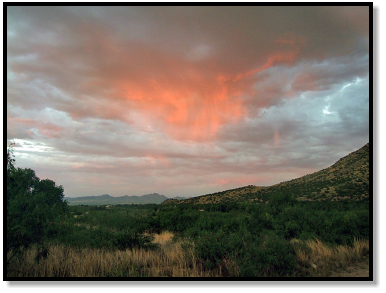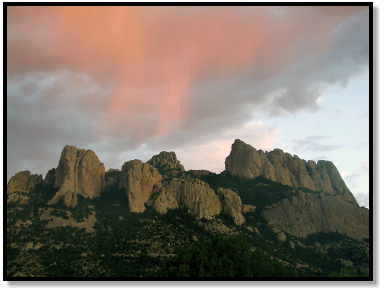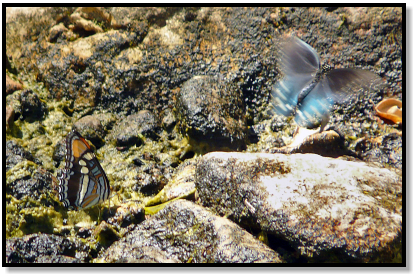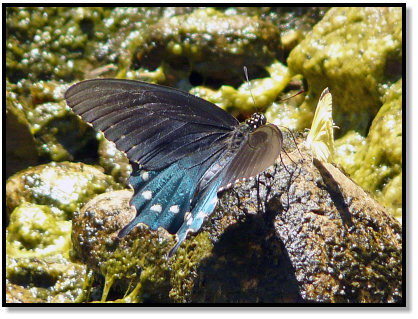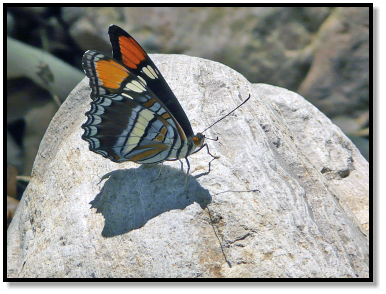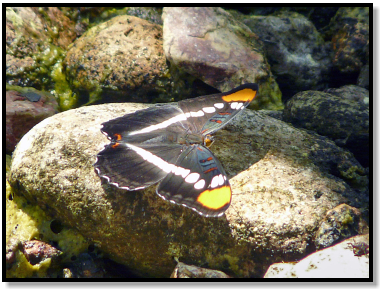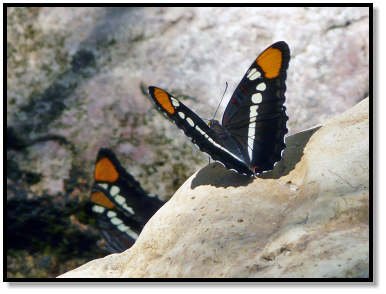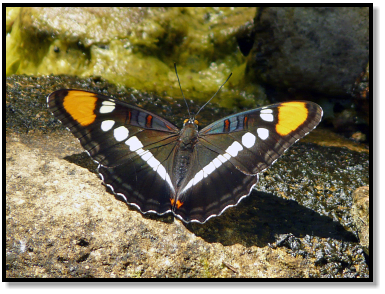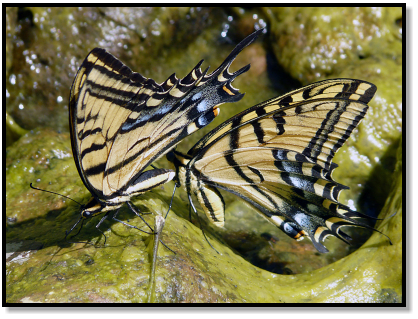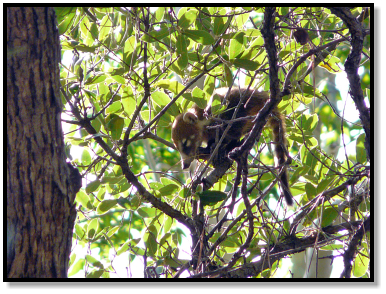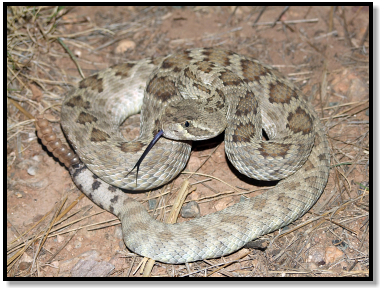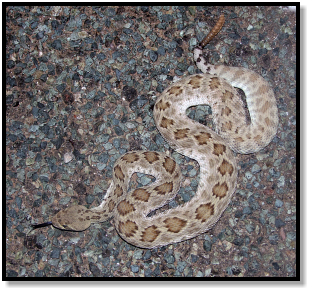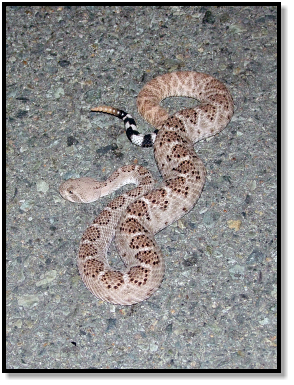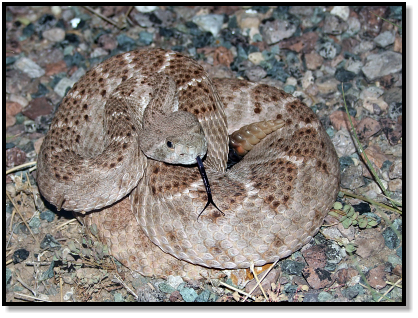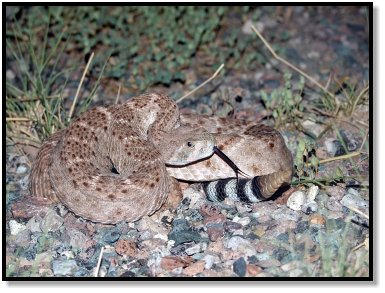

ARIZONA
July 2009

5 of 6


ARIZONA
July 2009


5 of 6
All text copyright © Eitan Grunwald. All photographs copyright © Eitan or Ron Grunwald
except photographs by others are copyright per photo credits. All rights reserved. Terms
Approaching the Chiris we find another Rattlesnake, but this time it’s not a Mojave or WDB.
We leave behind the desert flats and rise into the Chiricahuas.
Park the car and begin to walk. Plateau Lizards scurry up trees as we pass by, occasionally hitching a ride.
Hike to a dry stream bed and start scanning the boulders. We split up, but pretty soon Ron calls me to come and
take a look.
It’s a two-fer, a pair of molossus taking temporary shelter. I just love finding partially hidden snakes in situ, the
kind you’d never notice if you weren’t searching for them, a herper’s reward for due diligence (or sheer dumb luck).
Farther upstream there’s nothing hidden about these bright butterflies, sipping salts and other mineral nutrients
from the moist rocks, a behavior with the delightful name of “mud-puddling.”
We wander a bit more, but that’s it for daylight herps. Ron does discover a pair of fawns hiding in plain sight,
lying silent and motionless in the forest, but our biggest surprise was back on the road.
A mother coati and her half-dozen babies march out of the woods in single file and cross right in front of us. I
know the Chiricahuas are one of the few places in the U.S. where these Mexican/Central American natives can be
found north of the border, though I never expected to see one. We stop and grab cameras, but when the car doors
open, the coatis scatter in all directions, crashing and disappearing into the underbrush, except for one lone youngster
who scrambles up a tree.
As the light is dimming, we drive down from the mountains, back toward the desert for an evening of
roadcruising.
Out on the flats we look back and get a sunset view of a virga, a curtain of precipitation that evaporates before
reaching the ground.
This meteorological phenomenon often occurs in deserts, and unfortunately for us, it’s about as close as we come
to witnessing rainfall. We were hoping to catch the beginning of monsoon season, when thunderstorms stimulate a
burst of herp activity, but drought conditions persisted all week, suppressing the number of snakes on the move.
Still, we can always count on Rattlesnakes.
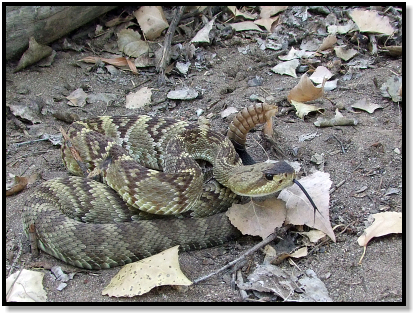
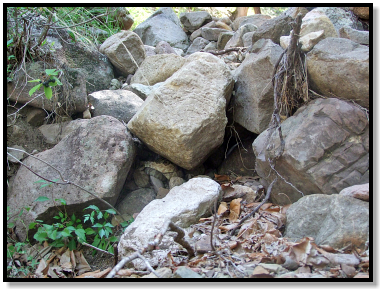
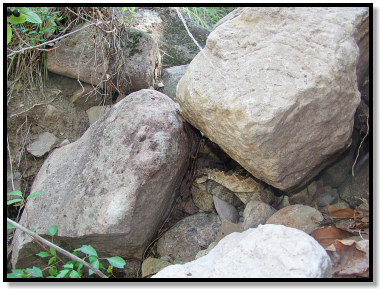
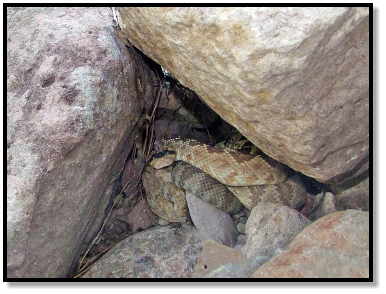
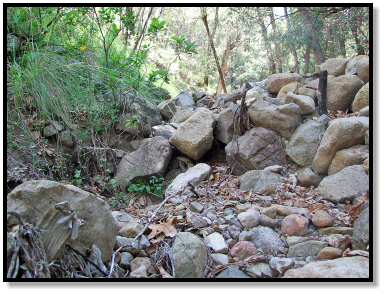
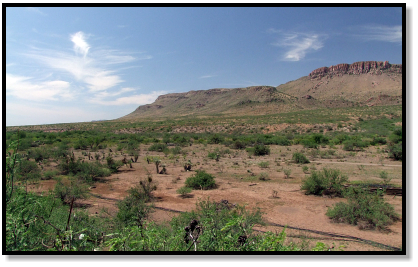
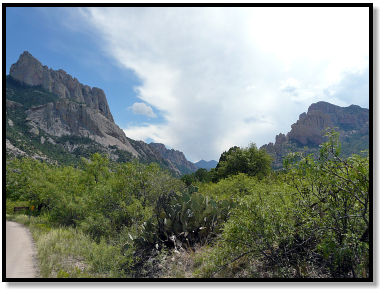
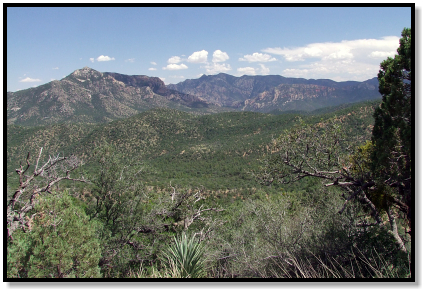
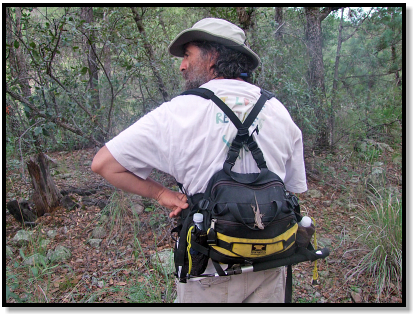
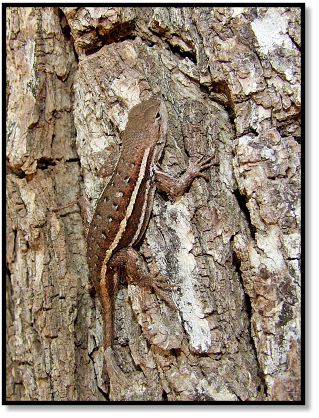
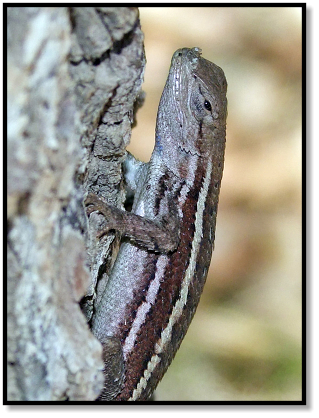
Black-tailed Rattlesnake
Crotalus molossus
Striped Plateau Lizard
Sceloporus virgatus
